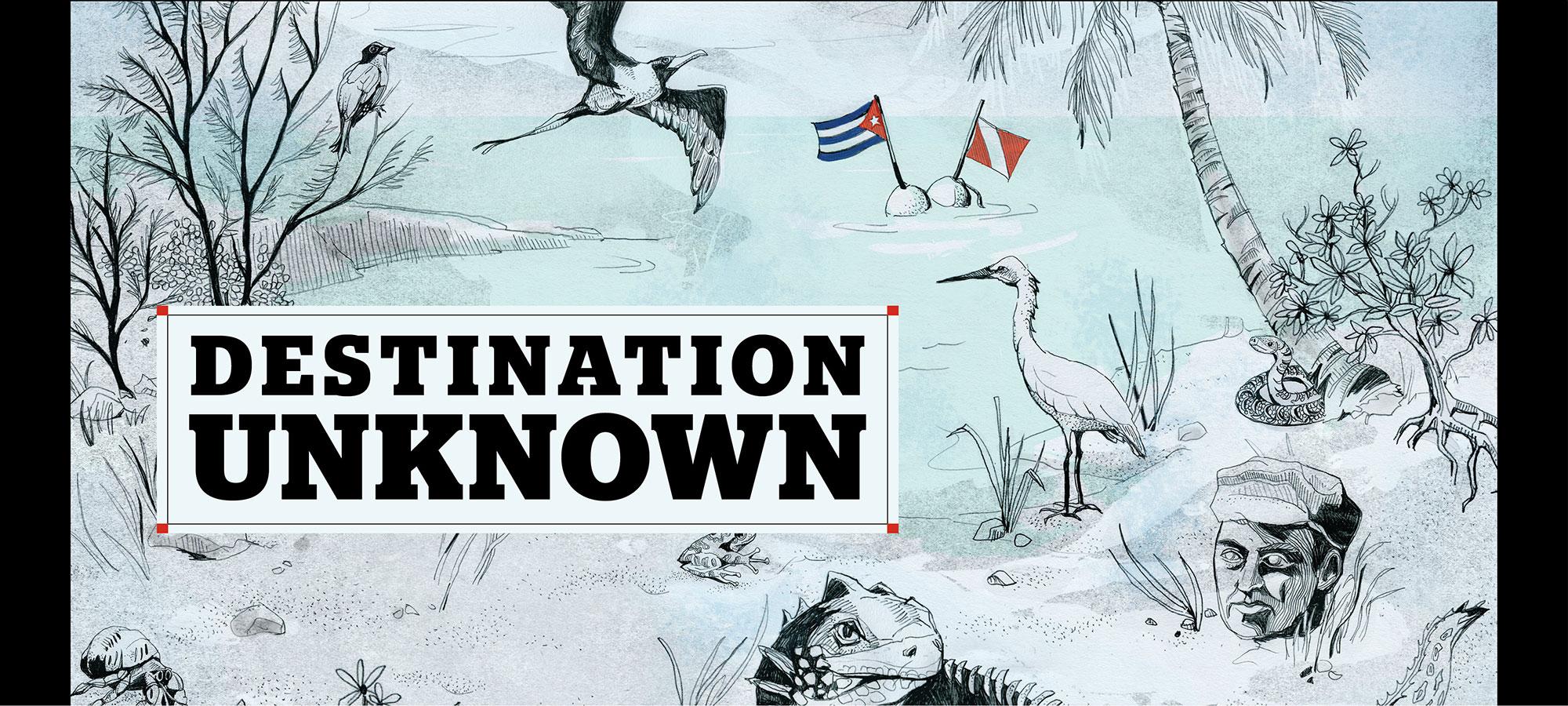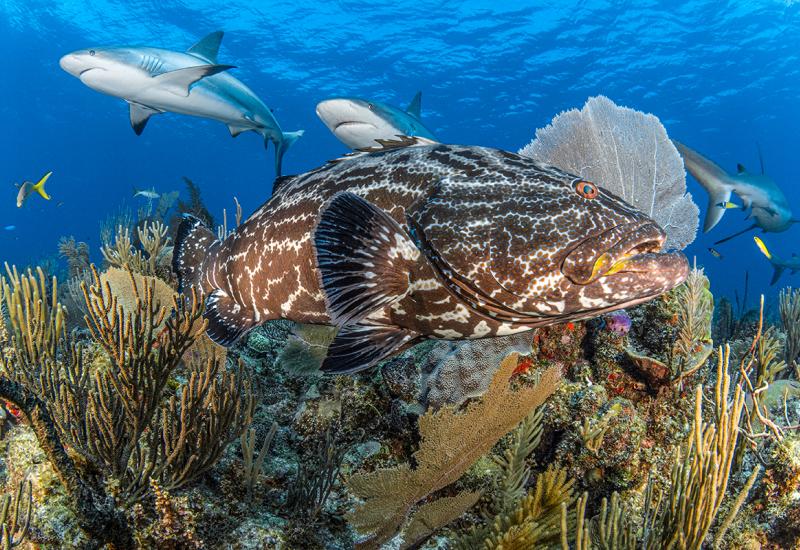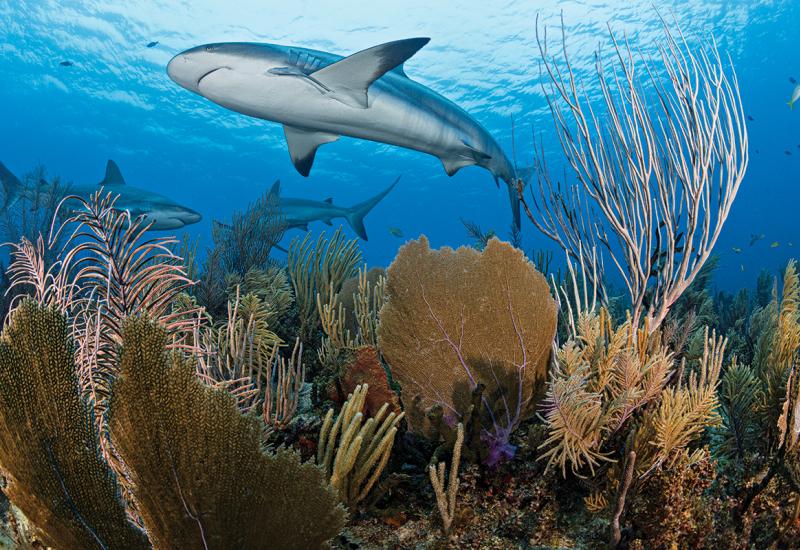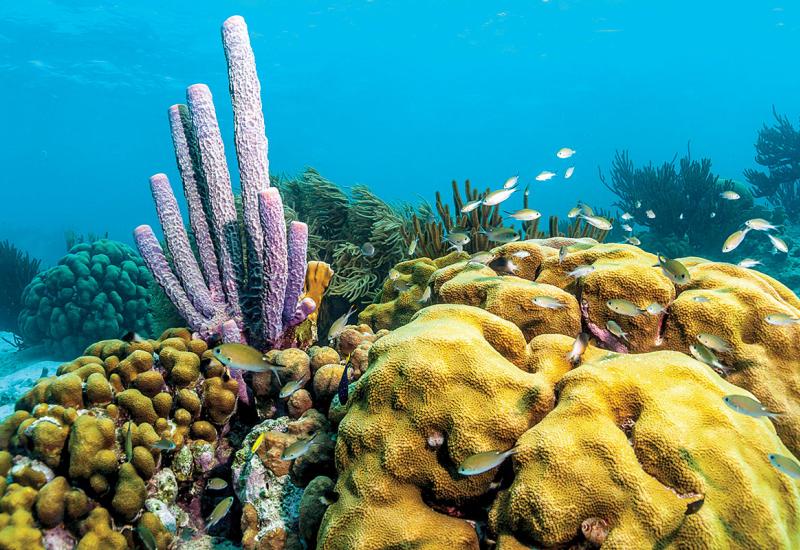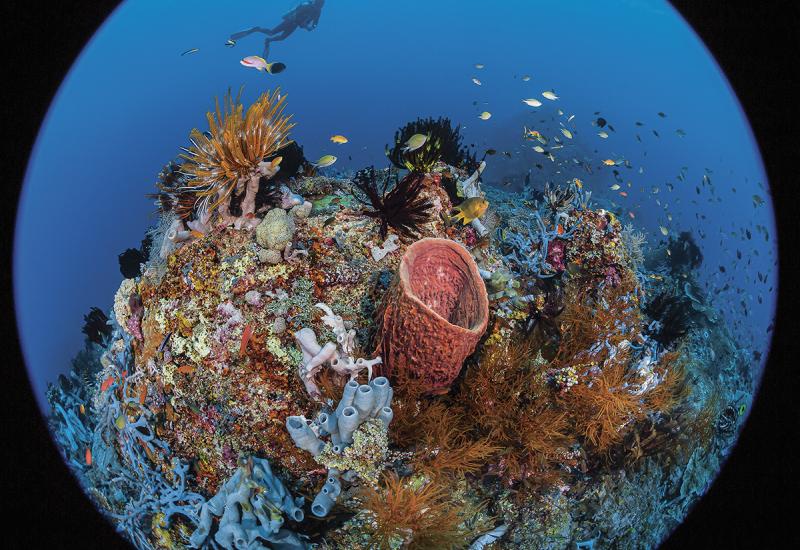Destination Unknown
It's just after 11a.m. on the third day of this exploratory trip along the Zapata Peninsula of Cuba's southern coast. Four divers — Wayne Brown, his friends Bryan Hatch and Mike Sutton, and Capt. Jay Roberts — can't suppress their chuckling as guide Noel Lopez attempts another predive briefing. Lopez's shoulders find his ears as he says we might find grouper. Maybe stingrays. Lopez has decades of experience in Cuban diving, but he has never set fin at the site we're about to drop into.
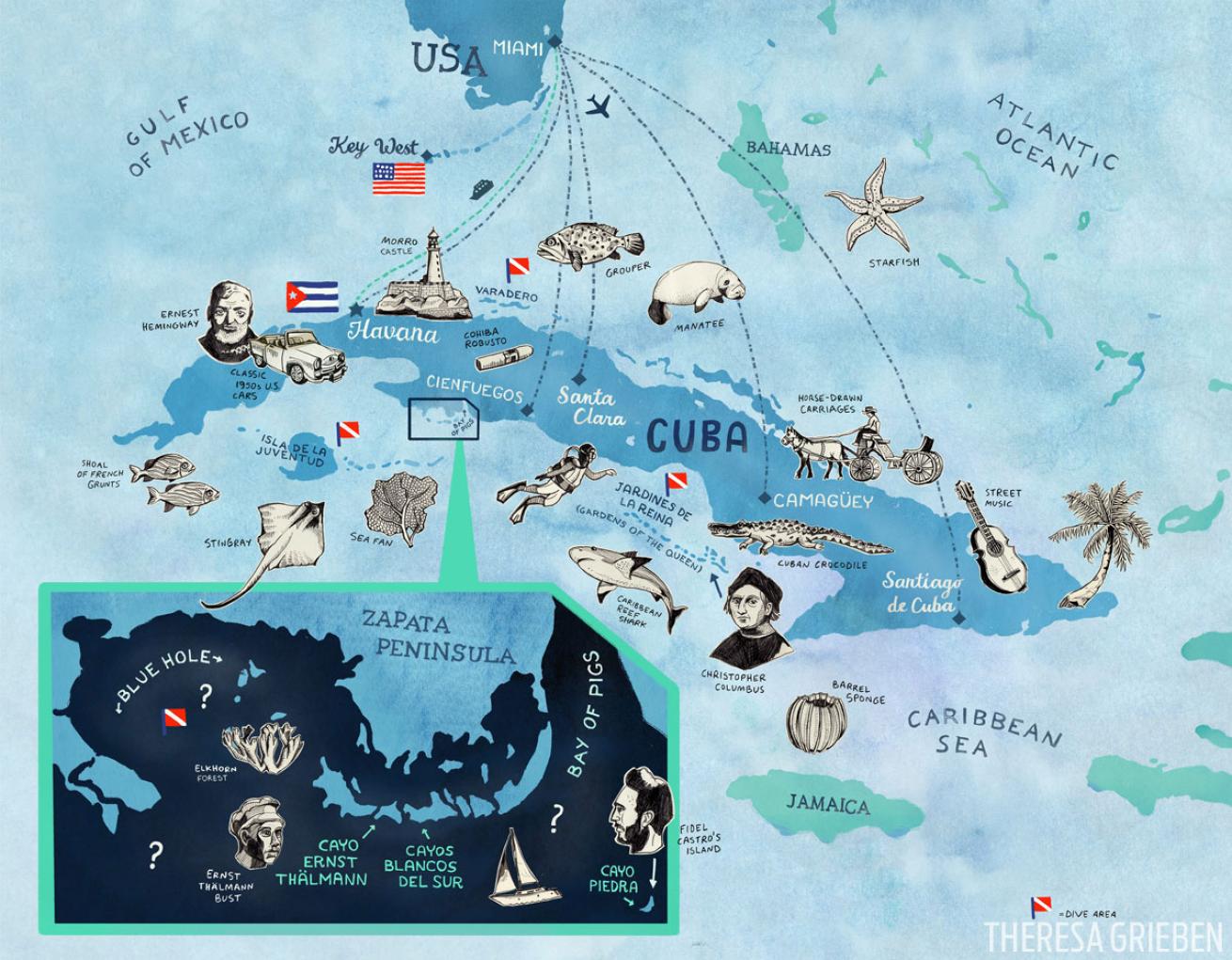
Theresa GriebenWhat's it like to discover a dive site?
That’s the thing about diving into the unknown. There’s no way to prepare divers for what they’re going to see if you’ve never seen it.
What Lopez does know for sure is what he’s gathered from local fishermen. They call this spot simply the Blue Hole. They told Lopez that they’d noticed unusually large schools of mutton snapper appearing from this area, an endless underwater grassy plain, just 10, maybe 12 feet deep. Mutton snapper typically prefer depths of 80 feet and beyond. It didn’t add up — that is, until they donned snorkels and masks, and found a hole.
According to the fishermen, that hole bottoms out at 60 feet, but perhaps that’s just as far as they could get. That’s not much of a blue hole compared with, say, Dean’s Blue Hole in the Bahamas, at 663 feet, or even the beloved natural-wonder child of Belize, an impressive 354 feet.
But the thought of being the first divers inside has us excited. Just after Lopez asks if there are any questions — laughter, again — we hop into the panga and speed toward this nameless destination.
At first, we linger at the edges. Schools of mutton snapper and French grunts flow away from us in waves as we near them, only to gather again at the bowl’s opposite edge. Then we spy an overhang at 30 feet. Underneath, only blackness.
Then a flutter of freediving fins flashes by. The fins belong to Irain Abrou Martinez, the young buck of our liveaboard staff. Three kicks and he disappears.
Roberts doesn’t skip a beat following Martinez in. And because Roberts is my buddy, I don’t hesitate either. After all, this is why we’ve come. Even before we fin down this particular rabbit hole, we’ve come farther than the fishermen, the only ones who’ve laid eyes on this wonder. And this site is just part of the promise of unexplored Cuba, a place off -limits to Americans until the Obama administration loosened sanctions. When U.S. based airlines started jetting to Havana, Americans buzzed with excitement to see what lies on this island just 90 miles from Key West, Florida, yet worlds away.
PURE POTENTIAL
In truth, Cuba’s reefs are not entirely new to American divers. A Cuban- and Italian-owned liveaboard company has operated for years in the Gardens of the Queen — an 840-square-mile archipelago and national park known for reefs thriving with silky and Caribbean reef sharks — and in recent years has
hosted U.S. Treasury Dept.-approved trips for Americans. Nearly two decades ago, an American liveaboard company operated a boat in Cuba that lasted
a year, but complications from the embargo — namely fines penalizing travelers returning via the Bahamas — proved too difficult for most Americans. The Zapata Peninsula, on the western half of Cuba’s southern coast, remained one big question mark.
On our one night together in Havana before heading to sea, Brown spoke about the excitement of exploring this region. A board member for Oceans for Youth, a nonprofit that helps raise conservation awareness in U.S. schools and also operates approved trips to the Gardens of the Queen, Brown was eager to expand Oceans for Youth’s partnership with Cuba, to help protect its underwater treasures in places like Zapata.
The partners he works with in Cuba had all shared promising reports of Zapata. Rumors of blue holes and massive schools enticed Brown, as had the fact that this area is a protected national park — and close to Havana, making for a shorter trip for North American travelers. “The diving could be crap, but I don’t think that’s the case,” he says, sipping a 10-year aged rum. “The fishermen don’t really know what they have here. Zapata is all about potential at this point. Nobody really knows.”
The fact that few have seen Zapata is confirmed for us in three days of cruising, during which we see just one other vessel, a private sailboat anchored off a small island. We’re alone out here, which heightens the thrill of moments like entering the chasm in the blue hole.
Roberts keeps his camera running, his strobes illuminating the walls. The opening stretches 300 feet across and bottoms out at 115 feet or so — a cave. And yet, instead of stillness, the water pulls at us, attempting to send us back out the narrow passageway through which we entered.
Suddenly there’s movement underfin. A pair of nurse sharks, startled by our presence, attempts to flee, but they struggle, smacking against the cave walls, blinded by Roberts’ video lights.
We keep swimming, but then I nearly bump into Lopez. He’s pointing, and it takes me a minute to realize he’s gesturing toward the exit. Time to call it. Just as I decide this, a force of water grips me, and I slip through the passageway as if it were a waterslide. In seconds, I’m out, back in sun-dappled waters.
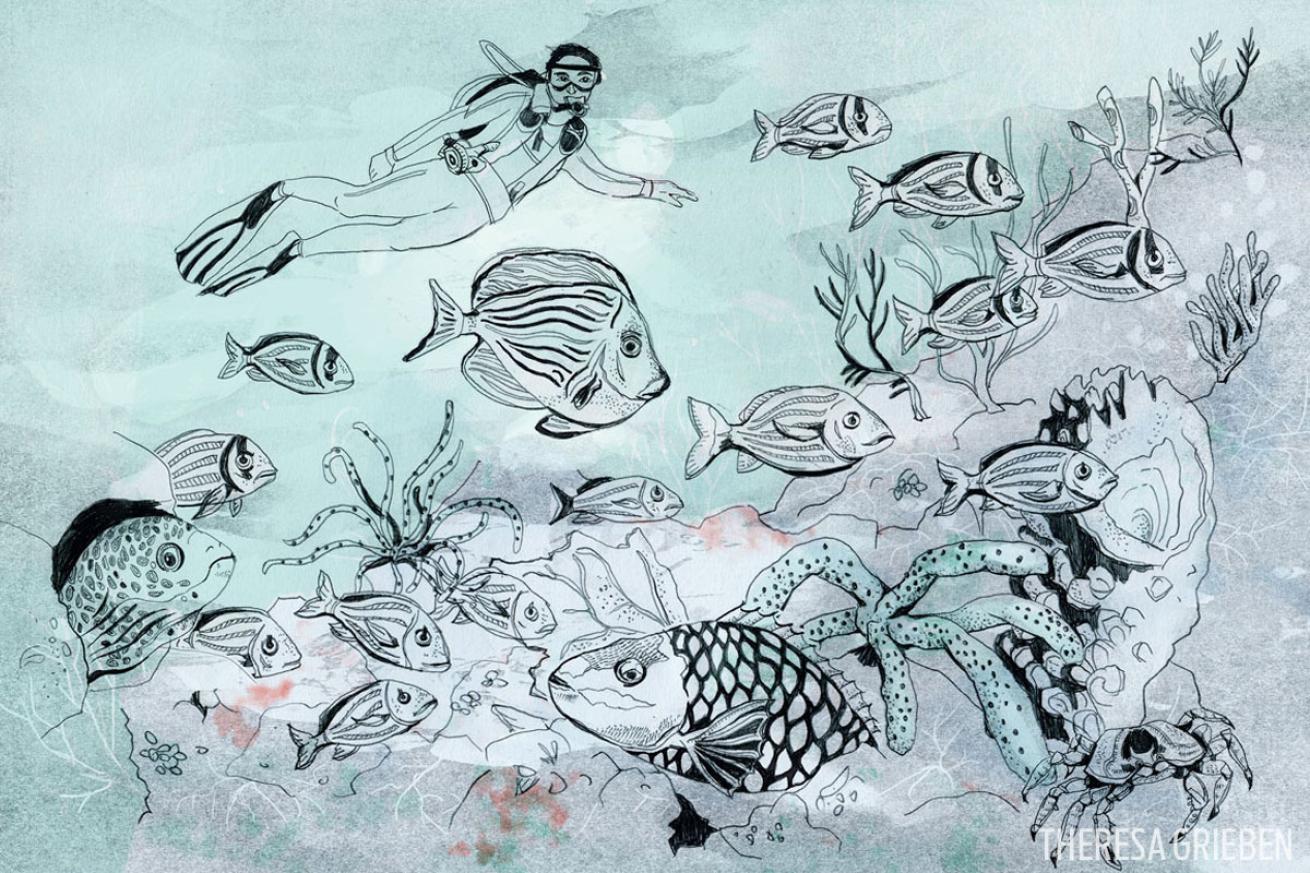
Theresa GriebenCuba's Zapata Peninsula as illustrated by Theresa Grieben.
THE RICHES OF CUBA
Over lunch, we debrief. Lopez admits he’d been worried that we could have been pulled farther inside the cave. At the bottom of the room, far deeper than any of us had swum, courses an underground river — of fresh water.
“The tides were pulling at that river, which was already fl owing. And with the tide going out, it draws the water out of the room,” says Lopez. “That area had been squeezed, trying to move a large amount of water through that small opening. Had the passageway been twice as wide, we’d have felt half that current. And at slack tide, perhaps you feel nothing.”
Lopez goes on to explain that the river’s source is likely on the mainland, perhaps 50 feet above sea level, perhaps from a pond on the island. But that would take an exploratory trip of another type to locate.
Dry land isn’t our focus, although we do take time to walk the beach of a sandbar island that exists only during low tide. Lopez also shows us to an island that once served as holiday-making grounds for a large Communist Party celebration. It sounds like an oxymoron — drab-clad leaders enjoying, or perhaps not enjoying, a white-sand beach flanked by pines. At the edge of the beach, we find a 6-foot bust of German Communist leader Ernst Thalmann toppled in the sand.
As we motor back to our liveaboard, I wonder if that last island is a microcosm of Cuban tourism. This island country is resplendent in its tropical wilderness, untouched by Western hand for half a century or more. And yet, the watchful eye of Communism is ever-present — to what extent, nobody knows.
But perhaps the reach of Communism here is somewhat stilled in the sand — which might open the door to more scuba shops in Cuba in the next five years. As it stands, not a single PADI dive center exists in this country. But it’s likely they will.
Earlier in the week, we had dived walls that rivaled those of Belize, with 100 feet of visibility and sponges as big as wheelbarrows, tipping toward the abyss. The waters here are thick with cubera snapper, rainbow parrotfish, schoolmasters, lobsters large enough to feed a family, and yellowtail tunas that buzz within inches of me. Cuba’s underwater communities couldn’t be more prosperous.
A DIP IN CASTRO’S POOL
The morning of our last day, Lopez unveils one more surprise. Since yesterday evening, we’ve been making our way back to the Bay of Pigs, the starting point of our trip. But first we’re stopping near Cayo Piedra, also known as Fidel Castro’s island. The former dictator claimed the spot for himself soon after the failed 1961 U.S. invasion. It’s prime real estate 10 miles from the mainland — far enough to detect any action and alert land-based troops. Ecologically, it’s also ideal, sitting at the tip of a triangle-shaped shelf jutting southeast from the Zapata swamp. The island marks the spot where two channels — the Bay of Pigs and the Golfo de Cazones — merge. It’s known as a spawning site, offering both shallow reefs and depths up to 761 feet.
Up until Castro’s death, the area enjoyed the same level of protection as a marine park.
We drop into little current. Now we have to choose which way. Half the group reads the site and chooses left; the other half heads right. I see ledges and caves to the left. My decision is made.
It couldn’t be a more scenic dive, with wire corals and sea fans framing rainbow parrotfish and schools of snapper and schoolmasters. It’s a great end to the trip — or so I think until happy hour.
As the sun sets the fuchsia sky ablaze, we raise glasses to this epic trip. Then we start comparing notes on the last dive. Brown is the last to open up. “Did you guys see those pinnacles? They were just covered in sea fans and sponges. That should have been the beginning of the dive.”
Turns out, none of us saw what Brown did. Lopez wasn’t even aware the site had pinnacles.
We’re all silent for a few moments, taking in the thought of what Brown saw.
Hatch breaks the silence. “How many truly unexplored places are there in the world? How many places can you say that you’ve been the only one? We’ve been really lucky.”
We murmur and nod as the day’s last light fades. A wicked grin spreads across Hatch’s face. “Really, that’s astronaut-level shit.”
WHAT IT TAKES
Cuba isn’t yet open to vacationing Americans. U.S. citizens must state the reason they are traveling — and checking out coral reefs is not an approved reason. Only 12 “provisions” are acceptable, encompassing education and humanitarian work, with “people-to-people exchanges” being the most common. Through that allowance, American divers can legally travel to Cuba with Oceans for Youth’s educational outreach programs (Zapata trips begin in March 2018), where, for example, divers learn about the latest reef studies from senior advisers to the Cuban Ministry of Fisheries as part of their trip. Divers traveling on their own can make individual arrangements — unofficially, many Americans jetting to Cuba for the weekend are doing little more than enjoying beaches, rum and nightlife — just know that your Cuba travel papers are kept on file with the American government, and violators still can be subject to heavy fines.

